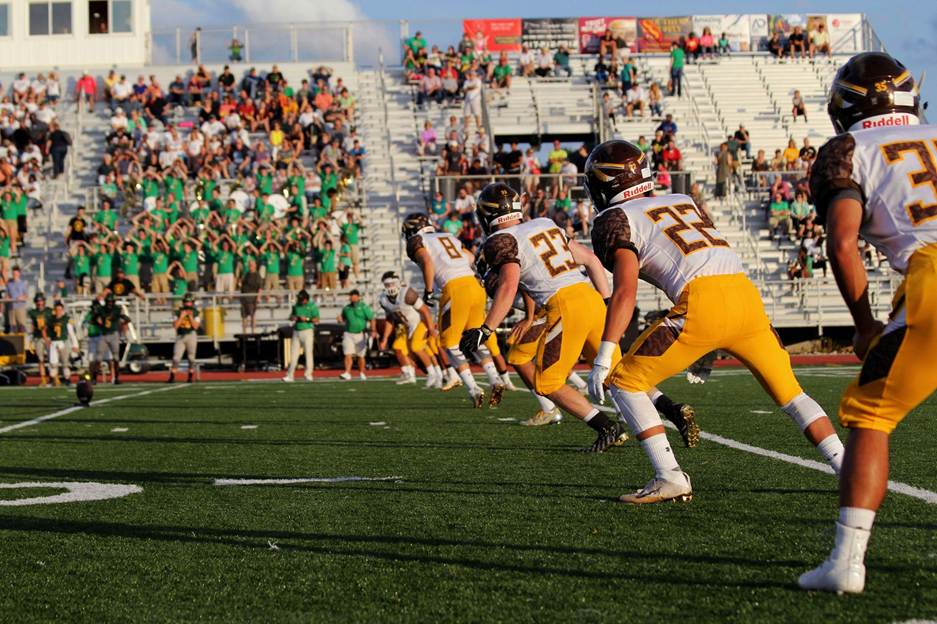The Role of Branding in College Sports: Jerseys, Helmets, and Fan Loyalty Explored
 Photo by Lynda Sanchez on Pexels
Photo by Lynda Sanchez on Pexels
In the vibrant world of college sports, branding plays a crucial role that goes beyond just logos and colors. It shapes the identity of teams and creates a sense of belonging among fans. From the iconic jerseys that athletes wear to the helmets that represent school pride, every element contributes to a powerful narrative that resonates with students and alumni alike. For example, many teams elevate their image with custom decals for football helmets, turning standard gear into bold symbols of unity and tradition.
As we explore the impact of branding in college sports, we’ll uncover how these visual symbols forge connections and enhance the overall experience for fans. With the stakes higher than ever in the competitive landscape of college athletics, understanding branding's significance can provide valuable insights into its influence on team loyalty and marketability. Let's dive into how these elements come together to create a memorable brand that stands out in the crowded arena of college sports.
The Importance of Branding in College Sports
Branding serves as a crucial element in college sports, influencing various aspects of team dynamics and fan engagement. Branding embodies team identity, reflecting values, traditions, and the spirit of the institution. It fosters a sense of belonging among fans, creating loyalty that extends across generations.
Consistent branding enhances recognition and visibility, allowing teams to stand out in a crowded market. Logo designs, color schemes, and uniform choices contribute significantly to this visibility. For instance, recognizable jerseys and helmets transform athletes into icons, making them relatable figures for supporters. Alumni and students often wear team apparel, reinforcing brand loyalty while acting as brand ambassadors within their communities.
Moreover, branding drives financial success through merchandise sales and sponsorships. Teams that effectively leverage their brand can attract lucrative partnerships, boosting their revenue streams. According to a 2021 report by the NCAA, schools with strong brand identities experienced a 20% increase in merchandise sales compared to those with weaker branding.
Engaging fans through branding extends to social media and marketing campaigns. Using dynamic storytelling and consistent messaging strengthens connections with current and potential supporters. Platforms like Instagram and Twitter allow teams to share behind-the-scenes content, making the fan experience more interactive.
Effective branding transcends college sports, impacting recruitment and team performance. Prospective athletes often seek programs with strong brand reputations, associating them with success and prestige. This connection enhances a school's competitiveness and attractiveness in recruiting top talent.
Branding in college sports goes beyond aesthetics—it shapes identities, builds loyalty, drives engagement, and influences financial outcomes. Our understanding of this significance highlights why branding remains pivotal in today’s collegiate athletic landscape.
Key Elements of College Sports Branding
Branding in college sports encompasses various components that contribute to the overall identity and perception of teams. Key elements include team jerseys, helmets and equipment, and mascots and logos.
Team Jerseys
Team jerseys serve as a primary visual representation of a college sport's brand. Unique designs and colors create immediate recognition among fans. Jerseys incorporate the school's colors and often feature elements that reflect its traditions, fostering a sense of pride. For example, the University of Oregon is known for its innovative jersey designs that align with its dynamic culture. Jerseys also play a role in marketing, as fans purchase replicas to showcase their support. This practice strengthens the emotional connection between fans and teams, thereby enhancing loyalty.
Helmets and Equipment
Helmets and equipment are crucial for both athlete safety and brand identity in college sports. Distinct helmet designs, featuring logos and school colors, create visibility on the field and aid in brand recognition. For instance, Penn State’s simple yet iconic blue and white helmet design emphasizes tradition and consistency. Additionally, innovative equipment designs, such as lightweight materials, not only improve performance but also convey a modern image of the program. Strong branding through helmets and equipment reinforces team identities and attracts fans and recruits seeking excellence.
Mascots and Logos
Mascots and logos are vital elements that embody the spirit of college sports. They provide relatable figures for fans and help build a community around the team. A well-crafted logo captures the essence of the institution, while a lively mascot engages fans during events and promotions. For example, the University of Florida’s Gators mascot delivers an energizing presence at games, enhancing the atmosphere and encouraging fan participation. Effective branding through mascots and logos contributes significantly to a team’s marketability and helps establish a lasting imprint in college sports culture.
The Impact of Branding on Fan Engagement
 Photo by Riley McCullough on Unsplash
Photo by Riley McCullough on Unsplash
Branding significantly influences fan engagement in college sports, creating loyalty and a shared identity among supporters. Fans rally around symbols that resonate with their values and experiences, strengthening bonds with teams.
Loyalty and Identity
Loyalty and identity are integral to the connection between fans and their teams. Recognizable branding elements, like jerseys and helmets, evoke emotions and symbolize shared experiences. We see fans displaying team colors and logos with pride, reinforcing their affiliation and sense of belonging. Programs with consistent branding cultivate deeper emotional ties, leading to lasting loyalty. A strong brand identity not only attracts current fans but also generates interest among future generations, ensuring continued engagement with the team.
Merchandise Sales
Merchandise sales significantly benefit from effective branding strategies. Schools leveraging strong brand identities often report substantial increases in merchandise revenue. Strong branding transforms jerseys, hats, and other items into desirable commodities for fans. A 2021 NCAA report indicated that schools with compelling branding experienced a 20% rise in merchandise sales. Fans are eager to invest in products that symbolize their team identity, contributing to overall financial health. Successful merchandise campaigns also expand reach through social media and targeted advertising, allowing teams to engage with fans while enhancing brand visibility.
Challenges in College Sports Branding
Branding in college sports faces significant challenges that can impact effectiveness and recognition.
- Fragmented Audience: Diverse demographics among fans create difficulty in developing a unified brand message. Different age groups and cultural backgrounds respond uniquely to branding elements, complicating outreach strategies.
- Regulatory Constraints: NCAA regulations limit certain branding opportunities and sponsorship collaborations. Compliance with these rules can hinder creativity, making it hard to craft standout identities.
- Resource Limitations: Many college athletic programs operate on tight budgets. Smaller institutions often lack the funding necessary for extensive branding initiatives, which can lead to less visibility compared to larger programs.
- Rapid Market Changes: The sports marketing landscape evolves quickly, driven by technological advancements and shifts in consumer behavior. Keeping up with trends demands agility and adaptability from branding teams.
- Competition: Increasing competition among colleges for attention and support makes standing out more difficult. In a crowded market, unique branding strategies must resonate more profoundly with audiences.
- Balancing Tradition and Innovation: Colleges often have rich histories that fans cherish. Striking a balance between honoring these traditions and integrating modern branding elements can be challenging.
- Consistency: Maintaining brand consistency across various platforms, from merchandise to social media, is critical. Inconsistencies can dilute brand identity and confuse fans.
- Athlete Influence: With athletes often becoming influencers, their personal brands can sometimes overshadow team identities. Programs must navigate this evolution to ensure a cohesive message.
Addressing these challenges requires a strategic approach that integrates historical context with modern techniques, ensuring our branding effectively resonates with fans while adhering to industry standards.


